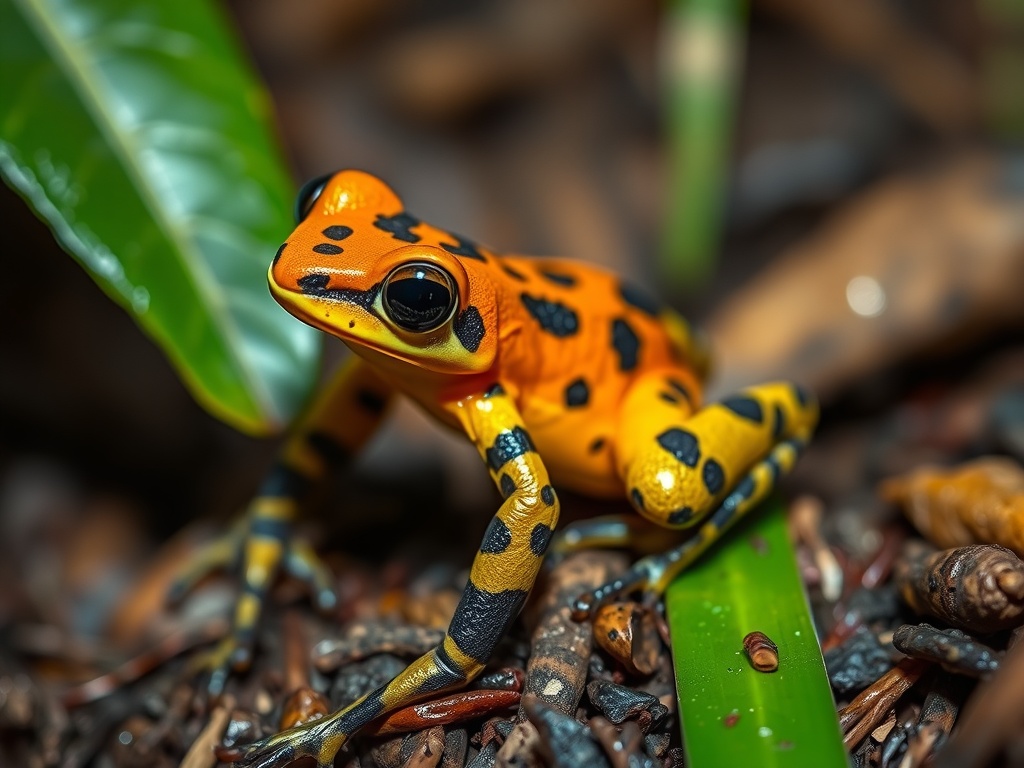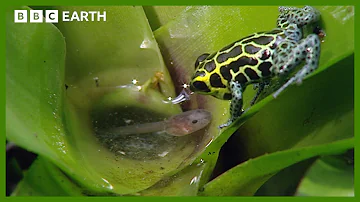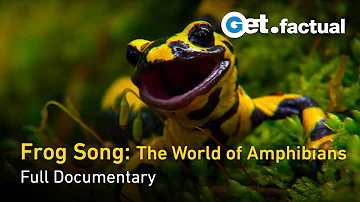
Dyeing Dart Frog
Dendrobates tinctorius

Meet the Dyeing Dart Frog
The Dyeing Dart Frog is a vividly colored amphibian native to the rainforests of northern South America. Known for its striking blue, yellow, and sometimes white coloration, this small frog serves as a warning to predators about its toxic skin secretions. Despite its name, the frog does not produce dyes, but local legends claim its skin was used to dye the feathers of parrots. The species is diurnal, highly territorial, and relies on small insects and arthropods for food. Its vibrant appearance and unique behavior make it a favorite among herpetologists and amphibian enthusiasts.
Classification
Amphibian
Habitat
Tropical rainforest
Diet
Carnivore
Lifespan
4-6 years in the wild, up to 10 years in captivity
Conservation
Least Concern
Weight
3-5 grams
📖Fascinating Facts
Brilliant Colors
The Dyeing Dart Frog displays a stunning combination of blue, yellow, and white patterns, making it one of the most visually striking amphibians.
Toxic Defense
Its skin secretes alkaloid toxins that can deter or even kill predators, a defense mechanism derived from its diet of ants and other small arthropods.
Parental Care
After eggs hatch, parents carry tadpoles on their backs to suitable aquatic sites, demonstrating unique parental investment among amphibians.
📋Detailed Description
The Dyeing Dart Frog (Dendrobates tinctorius) is a robust, medium-to-large member of the Dendrobatidae family, with adults typically reaching a snout–vent length of 40–55 mm, making it one of the largest poison dart frogs. Its skin exhibits a remarkable diversity of coloration, ranging from cobalt blue limbs and ventral surfaces to bright yellow, green, or white dorsal patterns, often with black reticulations or spots. This aposematic coloration serves as a warning to potential predators about its potent skin alkaloids, which are derived from its diet of ants, mites, and other small arthropods. The frog's skin is smooth and moist, with expanded toe pads that facilitate climbing, though the species is primarily terrestrial. D. tinctorius is diurnal and highly active, spending much of its time foraging on the forest floor but also climbing low vegetation and occasionally ascending trees. Males are territorial and use vocalizations, body postures, and wrestling to defend their territories. Social interactions are complex, with both aggression and courtship displays observed. Reproduction involves elaborate courtship rituals, and females lay clutches of 2–6 eggs in moist leaf litter or hidden crevices. Parental care is pronounced: males transport newly hatched tadpoles on their backs to small water bodies, such as phytotelmata or ephemeral pools, where the larvae complete metamorphosis. D. tinctorius is adapted to the humid, shaded understory of lowland rainforests, particularly in the Guiana Shield region, and is sensitive to microhabitat changes.
💡 Did you know?
Dyeing Dart Frogs transport their tadpoles one by one on their backs to water-filled bromeliads or tree holes, ensuring each offspring has a safe nursery.
🔬Research & Sources
Wikipedia Summary
The dyeing poison dart frog, also known as the cobalt poison frog, tinc, is a species of poison dart frog. It is among the most variably colored and largest species of poison dart frogs, typically reaching snout–vent lengths of about 50 mm (2.0 in). It is distributed in the eastern portion of the Guiana Shield, including parts of French Guiana, Guyana, Suriname, and Brazil. These types of frogs usually like to stay in the ground as it is easier to catch prey. They tend to also stay in bodies of water like rivers or climb trees. Because of this they mostly inhabit near the Amazon Rainforest. To mate they have special rituals and leave their tadpoles in freshwater.
Last Modified: 5/24/2025
🎭Behavior & Social Structure
Dyeing Dart Frogs are primarily ground-dwellers but are capable climbers, often seen ascending low vegetation or tree trunks in search of prey or suitable sites for tadpole deposition. They are active during the day, with peak activity in the early morning and late afternoon when humidity is highest. Their diet consists mainly of small invertebrates, including ants, termites, beetles, and springtails, which they capture using their sticky, protrusible tongues. Foraging is solitary, and individuals maintain and defend small territories, particularly males during the breeding season. Territorial disputes are resolved through vocalizations, visual displays, and occasionally physical combat. Social hierarchy is evident, with dominant individuals occupying prime foraging and breeding sites. Communication involves a series of soft trills and chirps, which are used for mate attraction and territory defense. The species exhibits site fidelity, often returning to the same shelter or breeding site repeatedly.
👶Reproduction & Life Cycle
Breeding in D. tinctorius is closely tied to the rainy season, though reproduction can occur year-round in consistently humid environments. Courtship involves the male leading the female to a suitable oviposition site, often under leaf litter or within a sheltered crevice. After a series of tactile and vocal interactions, the female deposits a clutch of 2–6 eggs, which the male then fertilizes externally. The male guards the eggs, keeping them moist by transporting water with his body or by urinating nearby. After 10–14 days, the eggs hatch into tadpoles, which the male carries singly on his back to small water bodies, such as tree holes, bromeliad axils, or puddles. Tadpoles are omnivorous and may exhibit cannibalistic behavior if food is scarce. Metamorphosis occurs after 6–12 weeks, depending on temperature and resource availability. Parental care is primarily provided by the male, though in some cases, females may assist in tadpole transport or provisioning.
🛡️Adaptations & Survival
D. tinctorius possesses several key adaptations for survival in its rainforest habitat. Its bright coloration is a classic example of aposematism, deterring predators by signaling toxicity. The skin contains batrachotoxins and other alkaloids, which disrupt nerve and muscle function in would-be predators. These toxins are sequestered from dietary sources, primarily certain ant and mite species. The frog's expanded toe pads and muscular limbs enable efficient climbing and jumping, while its keen vision and rapid tongue projection facilitate the capture of fast-moving prey. Behavioral adaptations include complex courtship rituals, territoriality, and advanced parental care, all of which increase reproductive success in a competitive environment. The ability to utilize a range of microhabitats, from leaf litter to arboreal water pools, enhances survival and reproductive opportunities.
📚Research Sources
🎨Cultural Significance
The Dyeing Dart Frog holds a unique place in indigenous folklore and local traditions. Its name derives from the legend that native peoples used the frog's skin secretions to dye the feathers of parrots, creating vibrant plumage for ceremonial purposes—a practice that, while widely cited, lacks direct ethnographic evidence. The frog's striking appearance has made it a symbol of rainforest biodiversity and a flagship species for conservation campaigns. In the global pet trade, D. tinctorius is highly prized for its coloration and relative hardiness in captivity, though ethical concerns about wild collection persist. The species also features in educational materials and ecotourism initiatives, highlighting the importance of amphibian conservation.
🔬Recent Research & Discoveries
Recent research on D. tinctorius has focused on the chemical ecology of its skin toxins, revealing significant variation in alkaloid profiles depending on geographic location and diet. Studies have also examined the genetic basis of color polymorphism, with evidence suggesting that both natural and sexual selection drive the maintenance of diverse color morphs. Behavioral research has documented complex parental care strategies, including the rare occurrence of biparental care in some populations. Ongoing studies are investigating the species' susceptibility to chytridiomycosis and the potential impacts of climate change on its reproductive phenology. Conservation genetics projects aim to assess population structure and connectivity across the Guiana Shield, informing management strategies.
🎥Wildlife Videos

Being a Poison Dart Frog Parent is HARD | 4K UHD | Seven Worlds One Planet | BBC Earth
Being a parent brings all sorts of challenges, but for the poison dart frog, remembering which tiny water pool you've left your ...
BBC Earth

Poison Dart Frogs 🐸 Life in Color with David Attenborough | Netflix After School
The poison dart frog is one colorful species! Islands inhabited by these vibrant amphibians see a range in color unlike any other ...
Netflix Family

Incredible Poison Arrow Frog Raises Tadpoles in the Treetops | BBC Earth
Raising tadpoles in the wild is no easy task. This tiny poison arrow frog has carried his young to the safe treetop pools. But when ...
BBC Earth

Frog Song: The World of Amphibians - Full Documentary
Amphibians are living fossils in a modern world. The various species of frogs, toads, and salamanders are more diverse than you ...
Get.factual

The Insane Biology of: The Poison Dart Frog
Images Courtesy of Getty Images Thanks to our Patreon Supporters: Eric Ypsilantis Robert Thompson Keith Skipper Credits: ...
Real Science

Poison Dart Frogs: Deadly Beauty of the Rainforest | Amazing Wildlife Documentary in 4K
Discover the vibrant yet deadly world of poison dart frogs! These small, colorful amphibians are known for their toxic skin and ...
Animals Jungle Life
🌍Habitat Information
The Dyeing Dart Frog typically inhabits Tropical rainforest environments. Dyeing Dart Frogs have adapted to their environments with specialized features and behaviors.
Primary Habitat:
Tropical rainforest
More detailed habitat information will be available soon.
🛡️Conservation Status
The Dyeing Dart Frog is currently classified as Least Concern. Conservation efforts are crucial for preserving this species for future generations.
Common Threats:
- 🏠Habitat loss and fragmentation
- 🌡️Climate change impacts
- 🎯Hunting and poaching
- 🏭Human-wildlife conflict
⚠️Threats & Conservation Challenges
While D. tinctorius is currently listed as Least Concern by the IUCN, it faces several localized threats. Habitat loss due to deforestation, mining, and agricultural expansion is the primary concern, particularly in the Guiana Shield region. Collection for the international pet trade, though regulated, can impact wild populations, especially in areas with rare color morphs. Pollution, climate change, and the spread of the chytrid fungus (Batrachochytrium dendrobatidis), which has devastated other amphibian populations, are emerging threats. Fragmentation of habitat can lead to isolated populations, reducing genetic diversity and increasing vulnerability to disease and environmental changes. Conservation efforts focus on habitat protection, regulation of trade, and monitoring for disease outbreaks.
🔬Scientific Classification
Scientific Name
Dendrobates tinctorius
Classification Hierarchy
🔍 About Taxonomic Classification
Taxonomic classification is a hierarchical system used by scientists to classify and organize living organisms based on shared characteristics and evolutionary relationships.
The system moves from broad categories (Kingdom) to increasingly specific ones, with each animal's scientific name typically consisting of its Genus and species.
📝Community Notes
Share your observations and insights about the Dyeing Dart Frog with our community of wildlife enthusiasts.
Join Our Community
Sign in to share your observations and connect with fellow wildlife enthusiasts.
Sign In to ContributeNo community notes yet
Be the first to share your observations about the Dyeing Dart Frog!
Explore Dyeing Dart Frog
Select a tab above to learn more about this amazing animal.
📸Photo Gallery
No photos available for this animal yet.
🌟Discover More Wildlife
Continue your journey of discovery with more fascinating animals from our database
